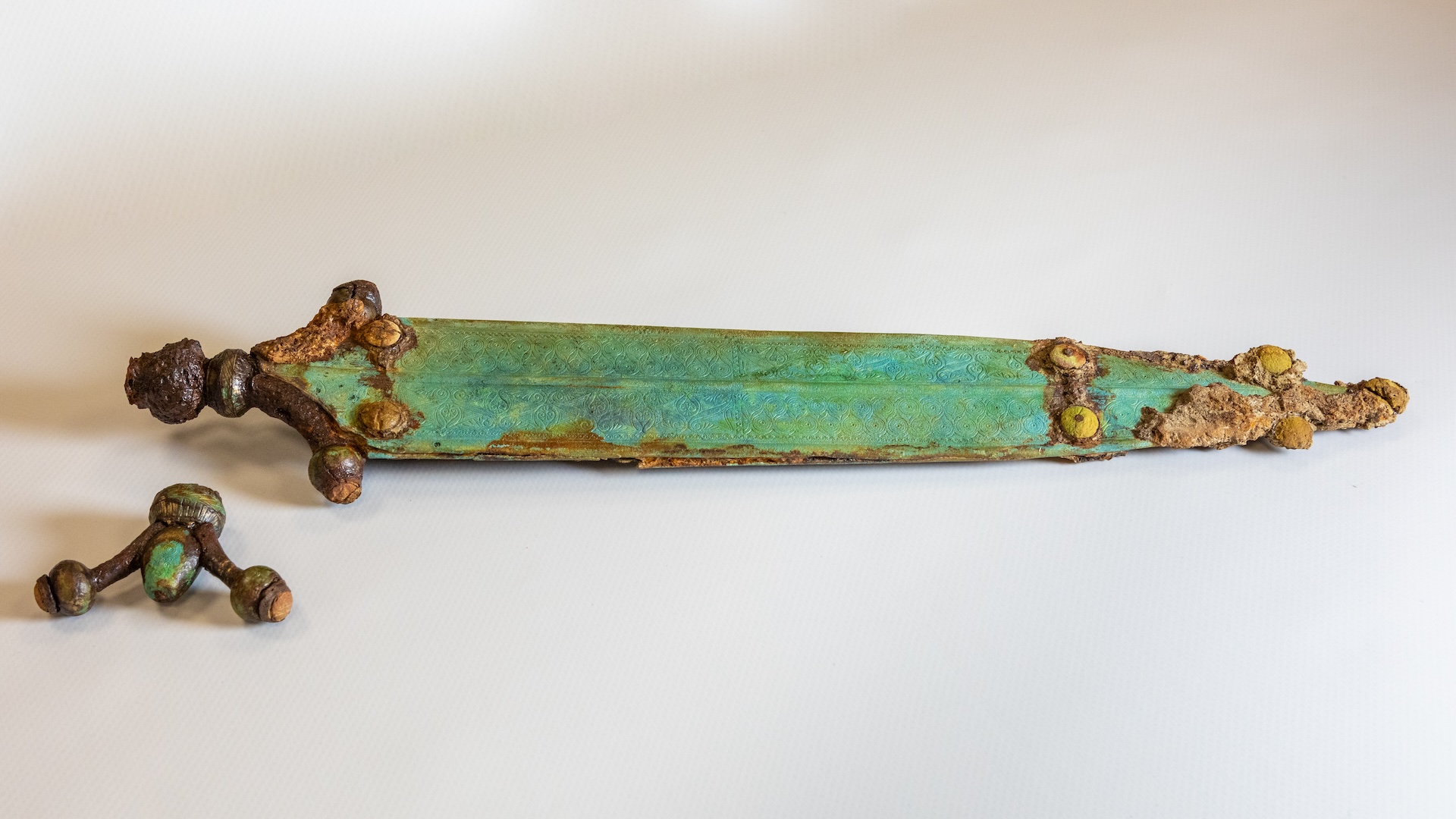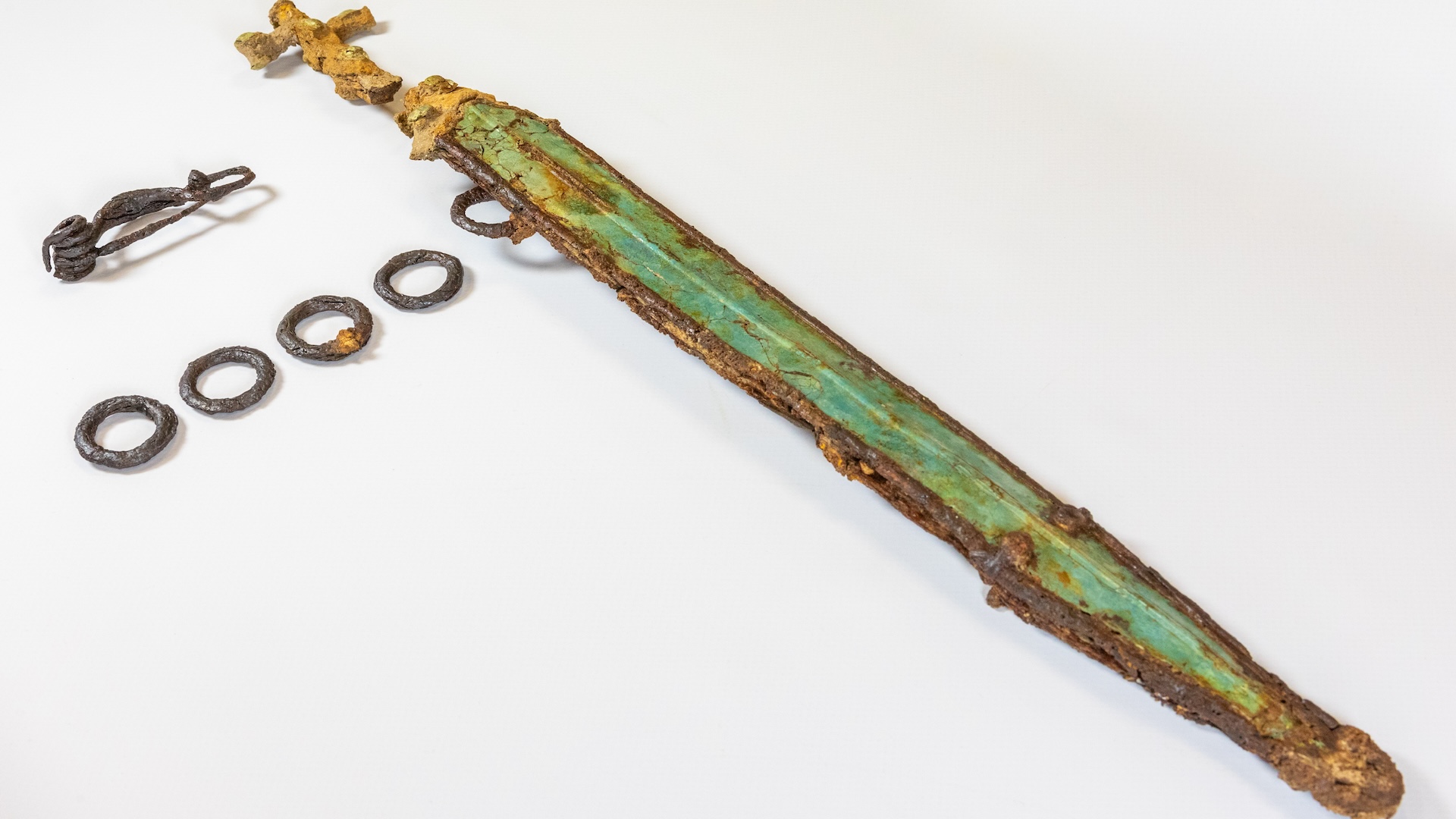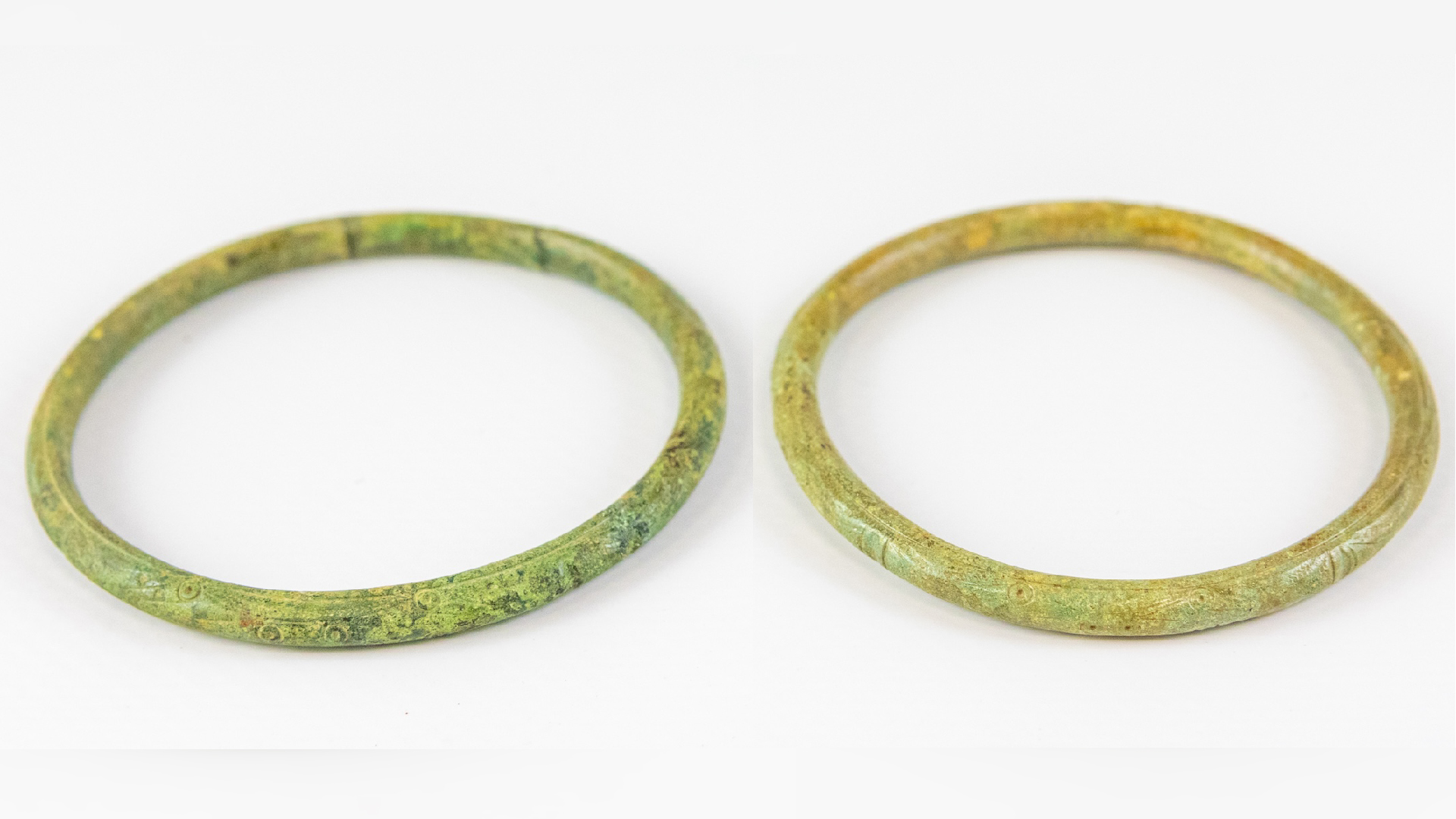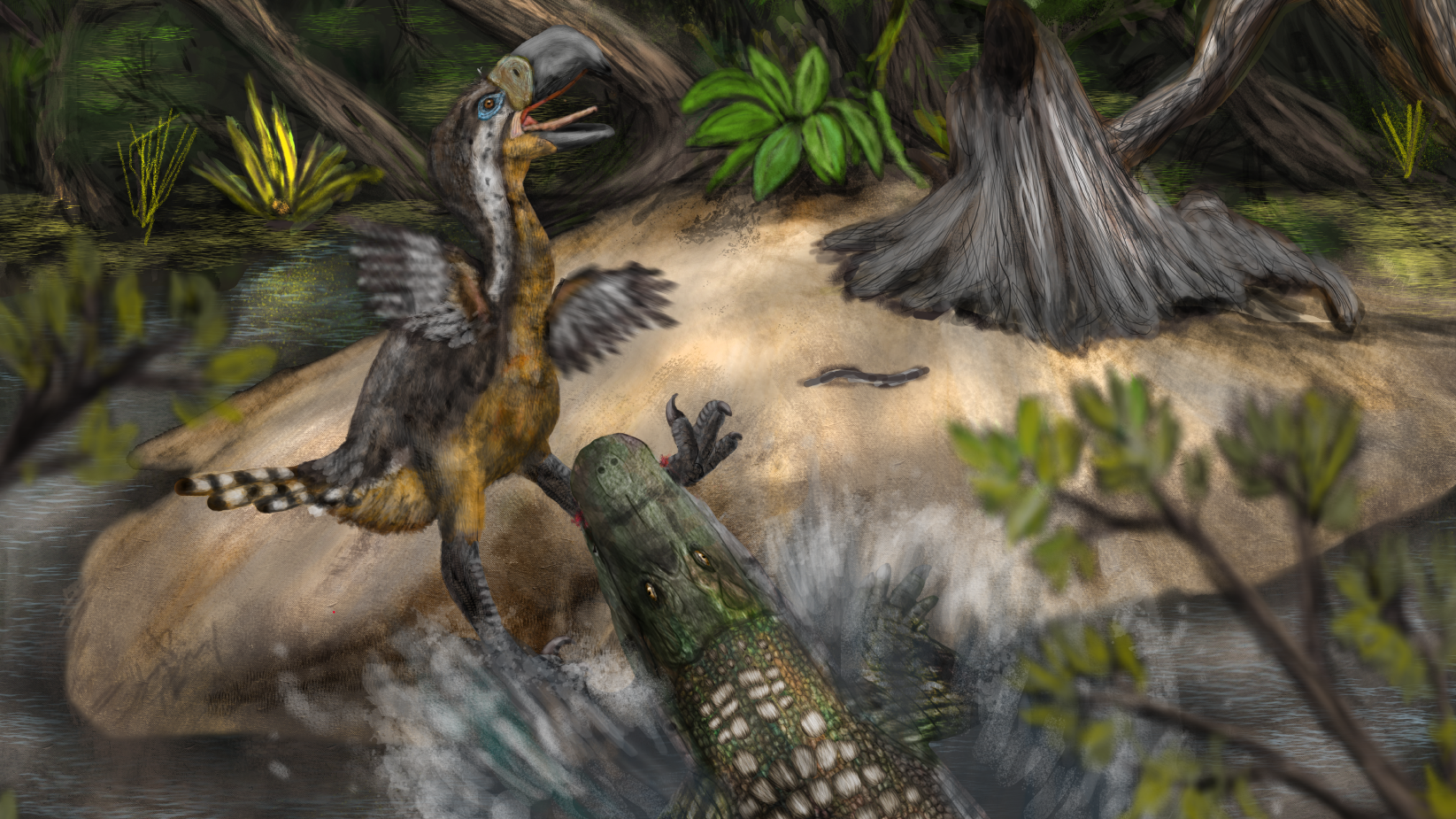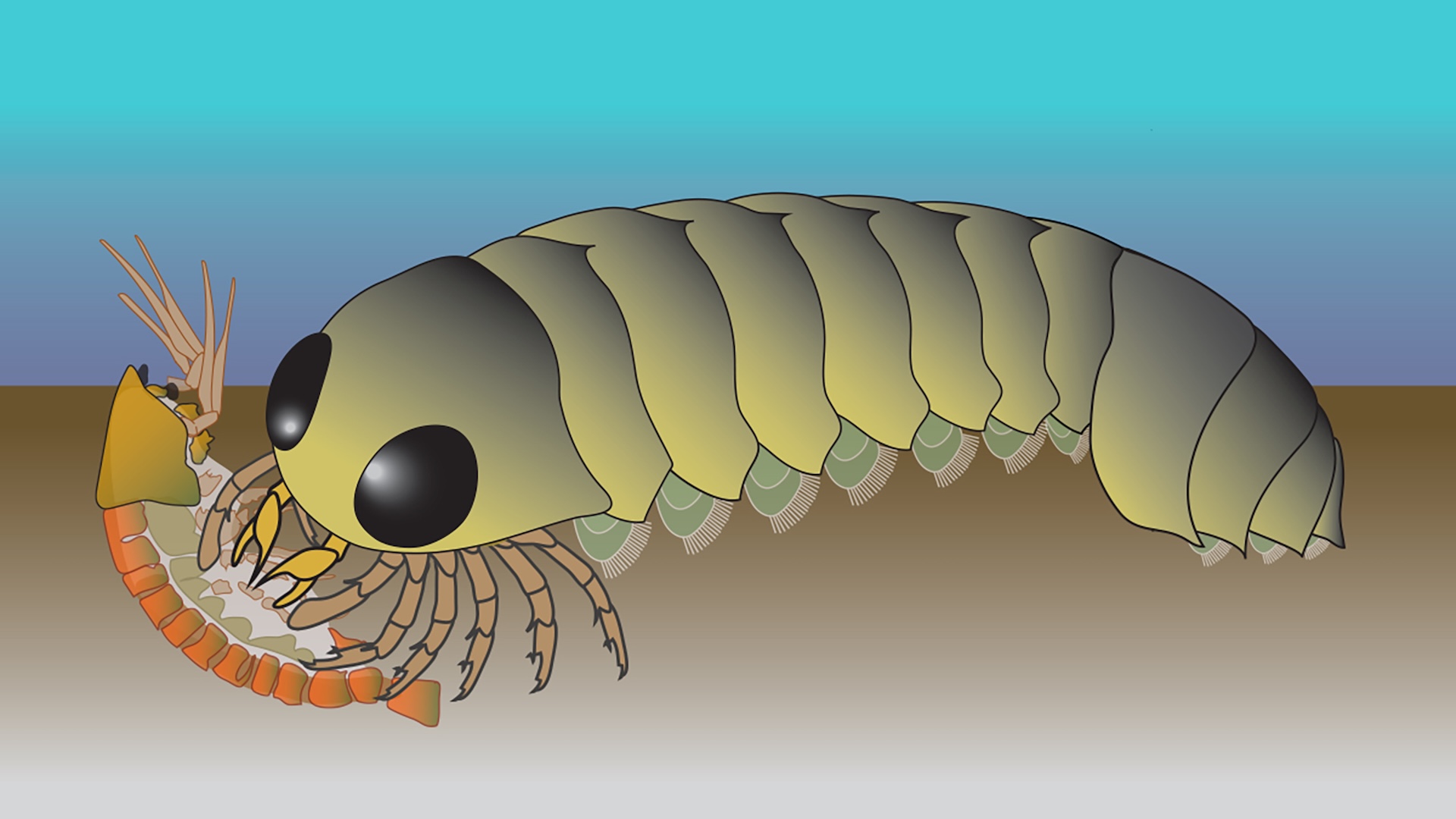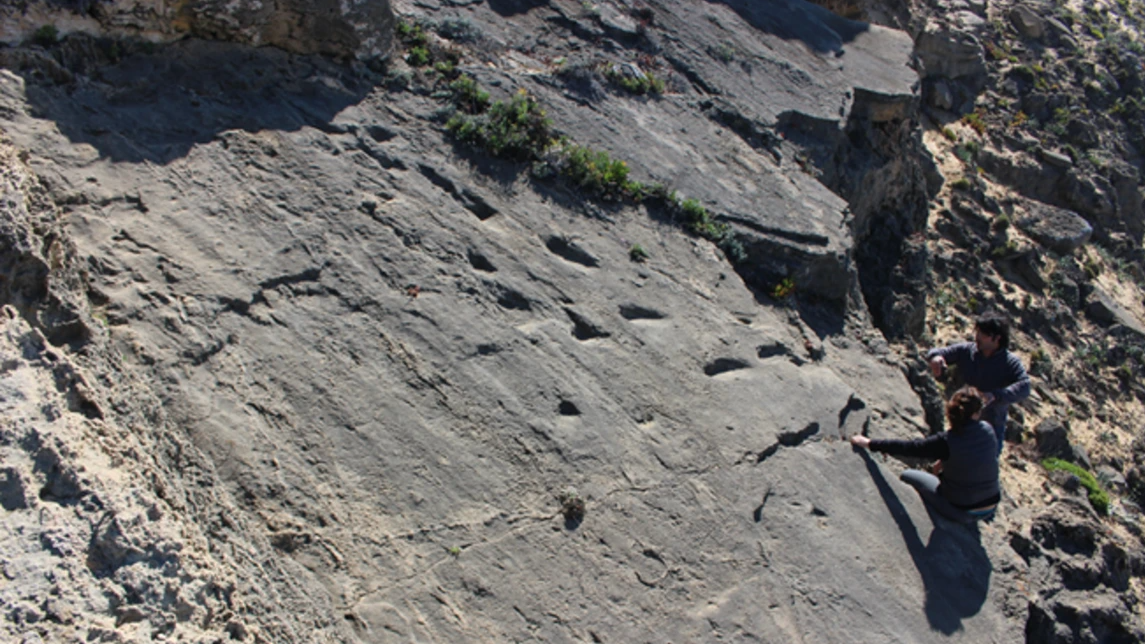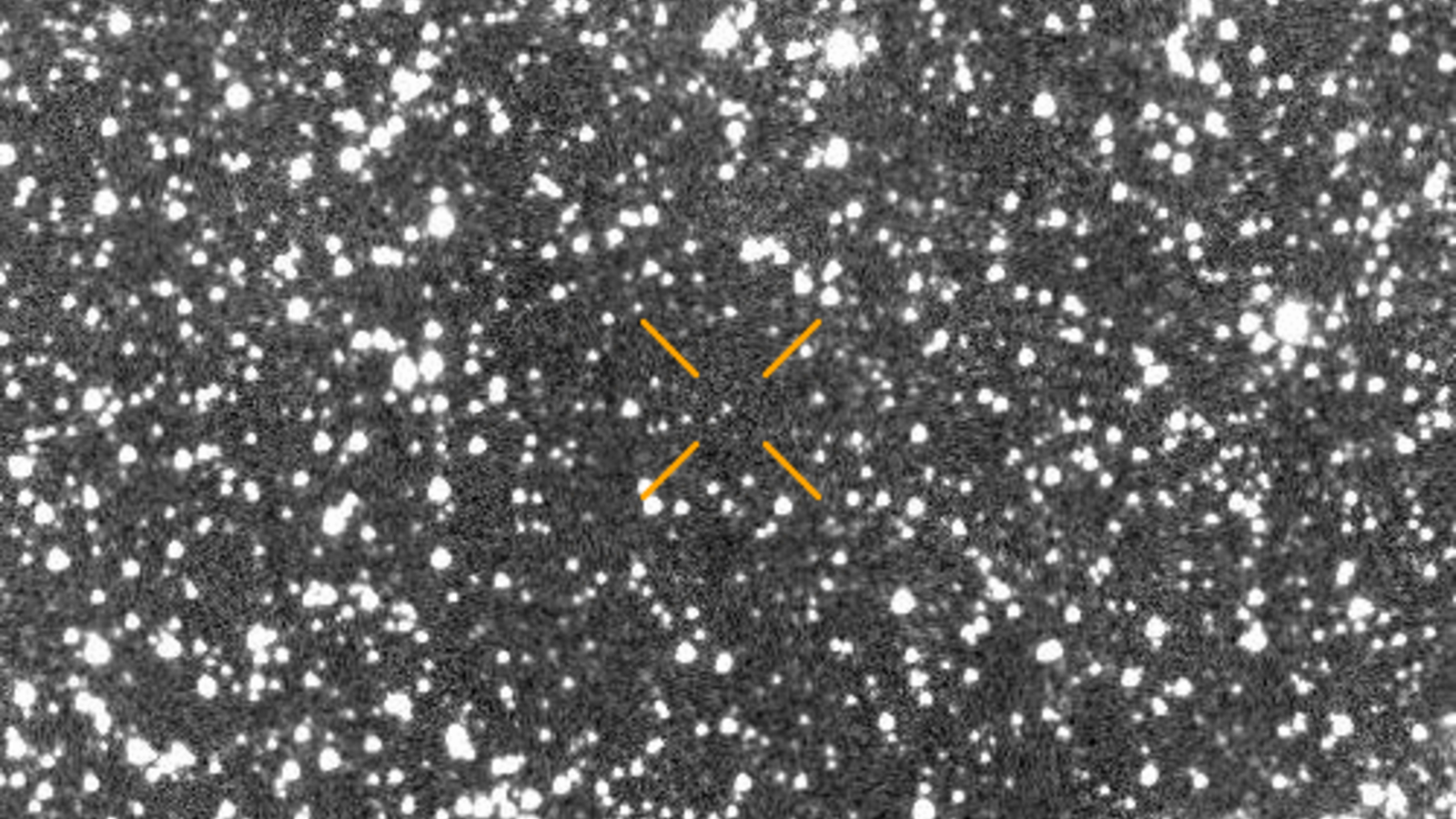Two 2,300-year-old swords discovered in a Celtic Iron Age necropolis in France “have few equivalents in Europe,” and one is decorated with tiny swastikas, the French National Institute of Preventive Archaeological Research (INRAP) reports.
Both swords were found intact in their scabbards. One of the swords has an ornate, copper-alloy scabbard designed to be worn at the waist. Several polished gems decorate the scabbard’s edges, and at least two of the gems have swastika designs.
Although swastikas are infamously tied to the Nazi regime and the atrocities of World War II, these ancient swastikas had different connotations. Swastikas were widely used in Mediterranean contexts, but these ornamental motifs were appropriated by the Celts in mainland Europe for their own use at the end of the fifth century and part of the fourth century B.C., Vincent Georges, an archaeologist associated with INRAP and manager of the necropolis excavation, told Live Science in an email. However, he is unsure of the swastika’s significance to the Celts.
Georges and his colleagues originally found the swords and other grave goods in 2022 at Creuzier-le-Neuf, a town that now has a population of just 1,500. But during the Second Iron Age (450 to 52 B.C.), Creuzier-le-Neuf was at the crossroads of territorial occupation by the powerful Celtic Arverni, Aedui and Bituriges tribes. The INRAP team excavated a roughly 7,000-square-foot (650 square meters) burial area there that housed over 100 graves. But due to the region’s highly acidic soil, no skeletal remains were found. A single cremation burial was discovered alongside a funerary vase with punched designs and painted bands.
Nearly half of the tombs had metal ornaments, including jewelry. Copper-alloy bracelets were the most common artifacts found in the burials, but the team also found 18 damaged brooches, including one decorated with a polished gem. The gem is set in a disc adorned with gilded silver and repoussé designs, or design patterns made by hammering the reverse side of the metallic sheet. It was created sometime between the late fourth and early third centuries B.C.
Another brooch has ocelli, or eyelike markings, a common decorative theme that was “fashionable among Celtic craftsmen” from the fifth and fourth centuries B.C., Georges said.
Related: Possible ‘mega’ fort found in Wales hints at tension between Romans and Celtics
Two rare swords
The most striking items found at the necropolis were the two well-preserved swords. An X-ray analysis of the short blade whose scabbard had the swastikas revealed embedded symbols at the blade’s top — a circle and a crescent moon separated by a line, suggesting it was created at the beginning of the fourth century B.C.
The sun and crescent moon “undoubtedly reflect cosmological symbolism” and were a “very widespread sacred concept linked to this particular kind of sword” at the time, Georges said. He noted that similar symbolism was found on other Celtic swords, as well as swords from the Etruscans, who lived in what is now Italy. He added that sun and moon designs can also be found on short swords throughout continental Europe from the third and fourth centuries B.C.
The second sword was longer and its scabbard still has its suspension rings that allowed it to be attached to a belt on the waist. Like some of the bracelets, this sword’s scabbard has ocelli.
The long sword has “all the characteristics of a functional weapon,” as it could be worn by a rider and its scabbard was not richly decorated. But the shorter sword with the swastikas does not appear to be functional, Georges said. Rather, this sword was likely used as a marker of power, including military command.
He added that the shorter sword is “more or less contemporary with the Celtic incursions in northern Italy and the sacking of Rome in 387 BCE,” when the Gauls beat the Roman army at the Battle of Alia, but “it is not possible to say more at this moment.”





